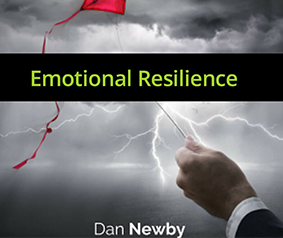In a world that doesn’t seem to every stop challenging us, emotional agility is increasingly talked about as an essential quality for leaders. It sounds nice, but what exactly is agility, where does it come from, and how does one develop it?
Emotional agility is “the capability to recognize your current emotional state and fluidly adjust it to produce optimal results.” Already that tells us several things that need to be present in our relationship with emotions. First, we need to be aware of the emotion we are in, or that is being triggered by the situation. Second, we need to be able to name it because emotions and thoughts are co-creative. If we feel a tightening in our stomach, recognize it and name it fear, we, at the same time, know that we are thinking that “something that is about to happen may hurt me”. The third step is to accept that this is the emotion we are in. Sometimes we’d prefer to be in another emotion, but we aren’t. When we get up to give a presentation, we may wish we were feeling calm, but in fact we are feeling anxiety. If we deny the anxiety, we are fighting against it whereas if we accept that we are experiencing anxiety, we can make choices about how to navigate it. We can be emotionally agile and choose an emotion that will serve the moment better. In the case of feeling anxious giving a presentation, we could shift to the emotion of service. Anxiety is a concern for myself; service is a concern for others so the shift is putting my attention on the experience I’m creating for the audience rather than the concern that something embarrassing may happen to me. While it is common to talk about ‘managing’ or ‘controlling’ emotions neither seems to be an effective way of dealing with them. Through the idea of navigating emotions, we can develop emotional agility which is the ability to be aware of the emotions we are experiencing and ease at selecting or shifting emotions in the moment.
Another aspect of emotional agility is understanding and having the ability to choose whether reaction or response is more effective for the situation. Every emotion has a reaction or impulse associated with it – in anger to punish, in sadness to mourn – but to some degree, we have a choice as to when and how we do that. What may be most effective is to focus on a response rather than the reaction. Resentment means we feel something is unfair and our impulse is “to get even when we can.” If we go with the impulse, we may sabotage or undermine the other person, but if our real concern is the unfairness we perceive, then a powerful response would address the unfairness. Once the story of unfairness changes we will no longer be in resentment and will no longer have the desire “to get even.” So, emotional agility is a skill we can develop based on our understanding of emotions in general and the specifics of the emotion we are experiencing. Many people struggle even to name their emotions which is the starting point for navigating them. You might think of emotional agility as practical emotional intelligence. As your awareness, knowledge, understanding, and comfort with emotions grow, you will find emotional agility becomes easier to create.
If developing emotional agility for yourself is important to you, please consider joining one of my upcoming masterclasses on emotions.



0 Comments